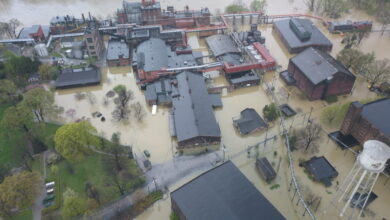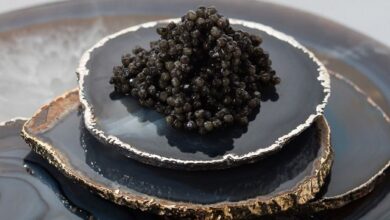Q&A With Robin Robinson, Craft Spirits Consultant
By Kurt Maitland

(Credit: Coopered Tot)
Last year during our coverage of Diageo’s decision to shutter their Masters of Whisky program, I reached out to the whisky community for feedback on the move. One of the best responses was that of Robin Robinson. This wasn’t a surprise as Robin is uniquely positioned to understand what the industry is going through, due to his years spent as the brand ambassador for Compass Box. His time spent breaking that brand into stores gives him great first hand knowledge about the industry at the “shelf” level, and his spirits knowledge is second to none. Robin is currently a whiskey consultant for up and coming craft distillers via his own company, and I decided it was time to revisit him and see what trends he sees on the horizon.
KM: So tell us bit about yourself and your background in whisky?
RR: I was once an actor and I was asked to impersonate a Scottish distiller at a whisky dinner in NYC many, many years ago. I had never heard of single malt whisky before that event, or even of a distiller, but it was paying cash; I did so well I convinced myself I was in love with it. I started looking for them everywhere, but few and far places carried them at the time, with very little selection. I eventually ended up at Talisker in the ’90s where the gods came down and danced in my mouth and a year or so later I had an epiphany at WhiskyFest: this is where I’m heading. At this point, I had a career in the tech industry working with Silicon Valley companies in sales. I started a whisky club, created educational and tasting events and started a blog to log our activities. Then a good friend of many years who was highly placed in the liquor industry drafted me into it after very little convincing and put me together with Compass Box, which is where most people know me from. After a great run of 7 years as their US Brand Manager and Brand Ambassador, I started a boutique consultancy focusing on small brands to help them enter and compete in the marketplace; and to better train a new generation of salespeople in selling spirits.
KM: What do you think of the current state of the industry?
RR: It was the best of times/worst of times. Maybe more dynamic than any other time in history for spirits, a greater awareness of brown liquors of all types by the consuming public. Quality all around is high; old line companies are defending their space against an onslaught of newcomers, particularly the exploding craft movement. It started here in the U.S., but has moved all over the world: new distilleries coming on online from Scotland to New Zealand, Austria to Singapore. Our tastes are evolving, welcoming new, big flavors, natural processes, transparency in production.
The downside: it’s becoming overwhelming, I’m sensing a fatigue in the marketplace, from distribution down through the trade. Limited amount of shelf-space, limited bar space, only so much that people can process in differentiation before it all just starts looking and tasting similar again. It’s a good challenge to have, but a challenge it is.
KM: I’m curious to get your perspective re: what challenges face the whiskey industry.
RR: Similar to above, but with the added issue of “what is whisky”? Is it wood dominated or grain-forward? Is it young or old, and what does that mean, do we keep shifting the age barrier to comply with different styles? What is American Single Malt? What is Craft? How much of this will the public care about is the question.
A great example is Jameson: whisky geeks get all tied in a knot about it, barrel aged v. finish barrel, 3 year vs. 8 year, blended v. single malt v. pot still, etc. But the average guy knocking back a shot with a beer doesn’t even know its Irish whiskey! It’s just Jameson’s! Whether that helps the category or not remains to be seen, but there are 25 new distilleries in Ireland that say it does. The other problem is if it gets too diluted, and by this I mean losing its soul by trying to broaden its appeal to younger drinkers. That’s what happened to vodka when it jumped the shark with flavorings like Fruit Loops and Mountain Dew. We’re standing on the precipice of that right now, we’ll see if we fall in or not.
KM: With all of the ramped up production industry-wide, what do you think the industry needs to do to prevent a worldwide “whisky loch” like that of the 70’s and 80’s?
RR – Ha! I think you answered your own question. In the craft arena, there’s a fair amount of agreement that the market can’t handle that many brands (close to 1000 spirit-producing distilleries in the US; line extensions from established brands and exotic whiskies from around the world) and some are going to either go under, get bought out for their distribution or brand equity or partner up with someone.
I think we would look to the Japanese for the solution to this (not just one particular distillery, though). In Japan, whisky is a foundation for many different types of drink products; they consume whisky in a diluted form much the same way we drink beer and wine in the US: it is consumed with everything. They drink whisky with tea, coke, soda water, fruit juice, coffee, etc. They consume it in RTDs (ready-to-drink) products that are available as widely as coconut water is here. If it gets baked into our everyday drinking habits, it’s going to have some real legs. Then on the other hand, you might face a moral/health backlash on consumption, we’re starting to see headlines from abroad showing public health concerns similar to what we have here. God help us all if we head into another Prohibition-style arrangement. But is there going to be a lot of used copper on the market in the next 5 years? I’m fairly sure of it.
KM: Are there any new whiskies/distillers that you have your eyes on or that really impress you?
RR: Ha, well, with that, I’d have to plug some clients, wouldn’t I?
Adam Spiegel at Sonoma County creates whisky as if it were cognac, using direct fired alembics and old wood finishing. Mike Reppucci at Sons of Liberty believes in real beer before real whiskey and also does some of the best natural flavorings I’ve ever tasted. Rick Wasmund of Copper Fox still malts off the first distillery floor built in the US since Prohibition and his once controversial wood-chip flavoring is getting more play around the industry. Far North Spirits is a true farm distillery on a rye farm settled by Mike Swanson’s great-grandfather; they sit on some of the best black dirt in N. America and he creates uniqueness from this single grain.
I’ve tasted wonderful whiskies from Balcones, FEW, Corsair, Wigle, St. George, Ransom and Craft Distillers. Kings County jumped leaps in flavor and subtlety since their early days. Todd Leopold may be the best least-known genius in the industry.
Merchant bottlers are getting more sophisticated in their offerings. I just had preliminary discussions with two up and comers, one that has a limited but delicious product on the market and one that is just getting started up but has the will and means to make a huge impact. So there’s an enormous amount of activity going on out there. It’s a damn exciting time to be in the whiskey business!


